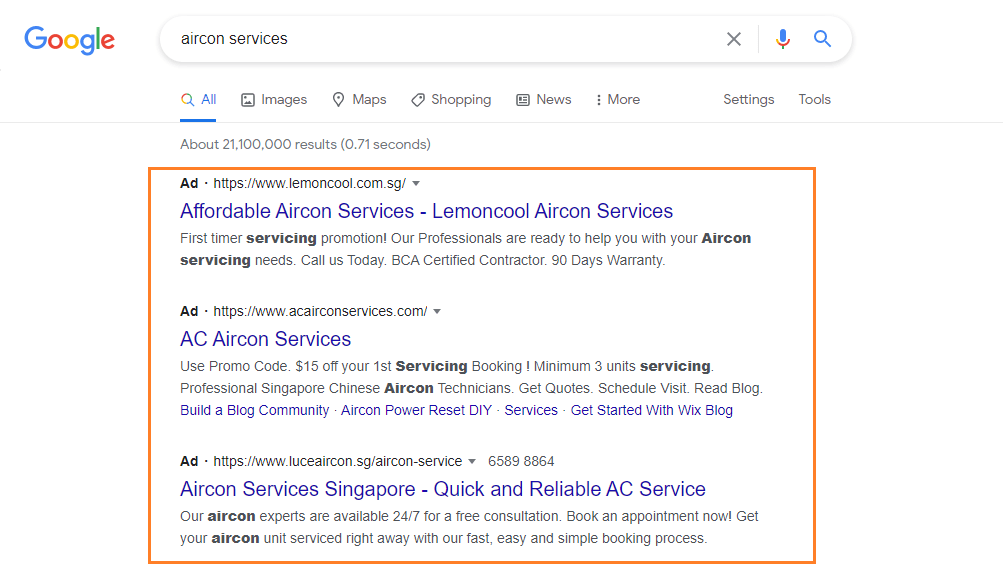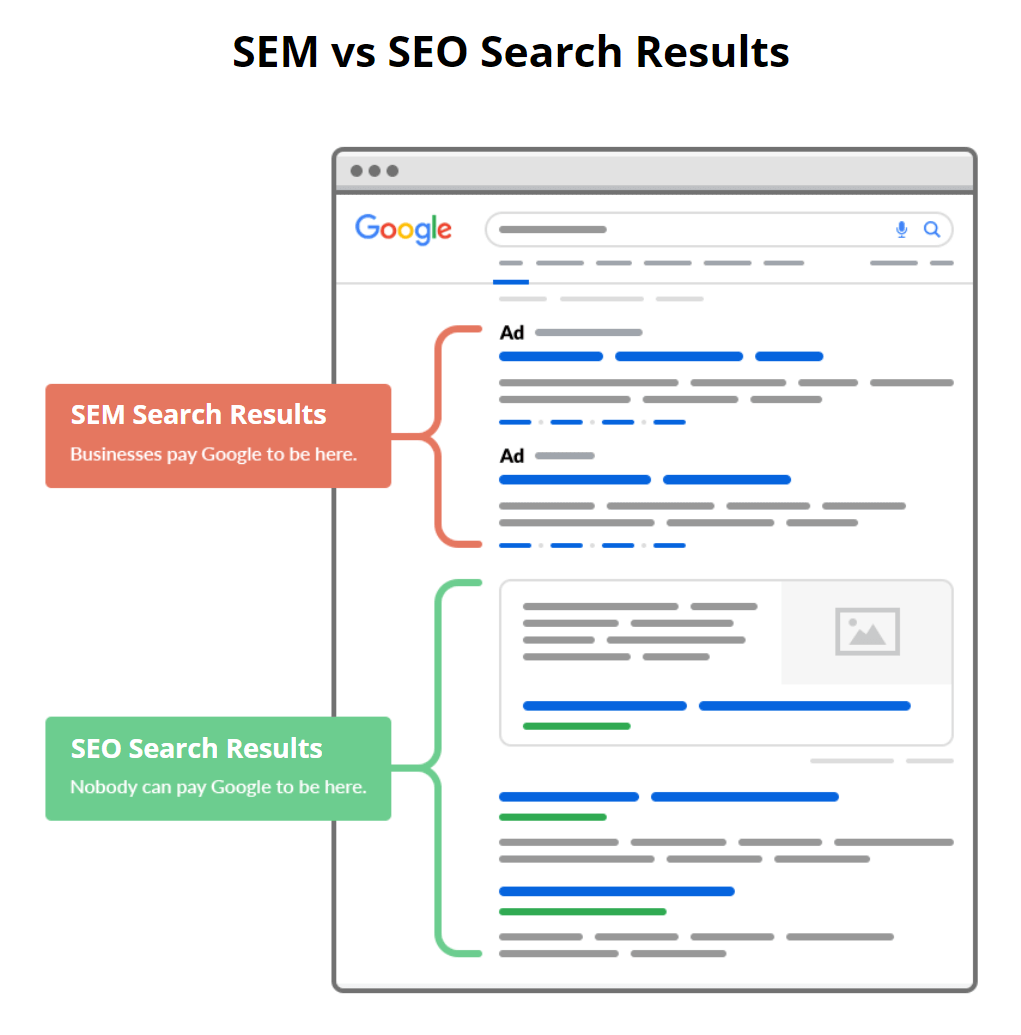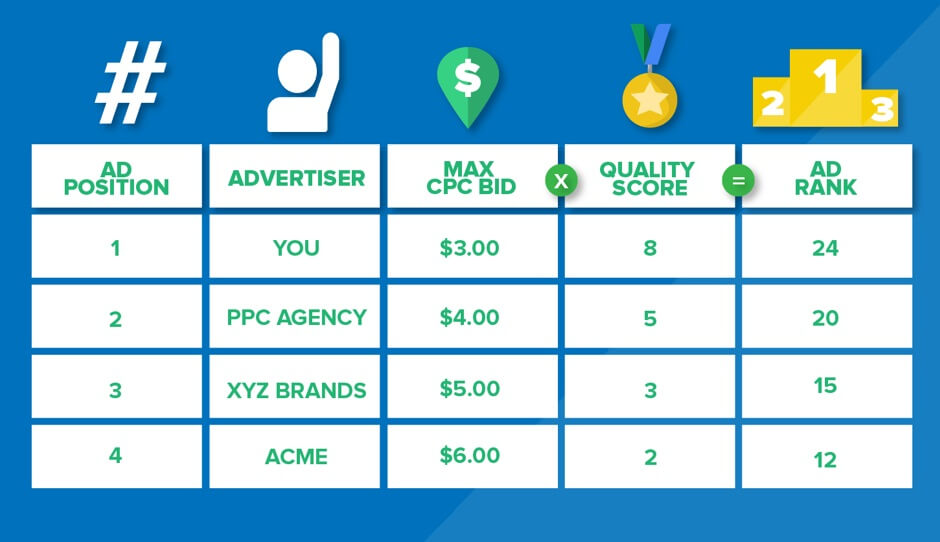To reach out to your target audience and scale your business in a competitive arena, search engine marketing (SEM) might just be one of the best ways to do so. Not only does SEM help to improve cost-efficiency in your digital marketing efforts, it also simultaneously shapes and grows your brand’s digital presence. How does it do so, though?
An Introduction to Search Engine Marketing

To put it simply, SEM leverages paid ads on search engines to reach your target audiences. The most popular SEM platform is Google Ads, with Bing Ads and Yahoo Ads as the other alternatives. SEM is also often known as pay-per-click (PPC) marketing.
With SEM, search engines help to put your ad on the top of their results page when the search queries get triggered. The position, however, is determined based on how much you are forking out for the keywords you bid on, and a quality score that tells the algorithm how relevant your ad is, in comparison to your competitors.
This is therefore a paid strategy, unlike search engine optimization (SEO) which brings visibility to your website via organic efforts.
The Benefits of Search Engine Marketing
1) Higher brand visibility in SERPs

Most people choose to use SEM in their marketing strategy as it brings instant brand exposure for their brands. This is especially helpful if a business is just starting to build their digital presence online, or faces a lot of competition in their chosen industry.
SEM therefore helps to spread word of your brand, by appearing at the top of search engine results pages (SERPs) when users are searching for answers.
2) Brings faster results

A second benefit of SEM is that it has the potential to be a quick leads and sales generator for your products and services.
Furthermore, the good thing about using SEM is that every onsite action related to a marketing campaign can be assessed. This includes actions such as visitors completing a lead form on your landing page, or purchasing an item on your website.
SEM is especially useful as it allows you to look into what works, what doesn’t. With this knowledge, you can then optimize marketing campaigns to achieve your business goals.
3) SEM is scalable

Thirdly, SEM campaigns are very much scalable. There is no minimum level of investment required to kickstart a campaign, so business owners can plan their marketing campaign according to their goals and budget.
This allows small and big businesses to compete on a level playing field, as they can start small, maintain a friendly budget, or scale as they grow along the way.
4) High potential for conversions and segmentation capabilities

As SEM campaigns help to reach the right people at the right place and time, there is a higher likelihood that your target users can convert into potential customers. Another benefit of SEM is that it has the power to segment audiences.
By picking selective keywords and excluding negative ones, you get to reach people who are interested in your brand. You can also then filter your SEM campaign according to other aspects, including geography, language or online behavior.
Furthermore, more consumers are digitalizing their shopping experiences, and it can be crucial for brands to leverage on this phenomenon to offer them the solutions they need.
5) More cost-effective than traditional advertising

SEM is also a lot more affordable than traditional paid advertisements. This is because you get to control the amount of ad budget you want to channel into the campaigns.
Instead of paying a fixed amount of money to advertise on television or public areas that might not exactly reach your audiences, SEM allows you to adjust your audience targeting. You get to pick from a range of targeting criteria, with room to zoom in to those who have shown interest in your offerings.
Furthermore, in SEM, if an ad is underperforming, you can choose to tweak several aspects or shut it off entirely. SEM therefore gives marketers the power to act at their disposal.
6) Provides competitive advantage

Where SEO efforts fail to deliver, SEM makes up for them. SEM allows brands to appear at the top of Google search engine results pages, usually dominating with 4 ads on desktop and 3 ads on mobile devices.
This means that users will always view your ads before the organic search results, and that gives you some competitive advantage via SEM, if your SEO efforts are not on par yet.
7) Real-time results and monitoring

Another benefit we enjoy is how SEM allows us to monitor our efforts and the responses of users in real time.
For instance, making amendments to the headline or description can improve the click-through rate of your ad. You can also optimize the cost-per-click of your ad campaigns as well.
All these let you monitor your SEM campaigns and optimize accordingly for campaign success.
What are some best practices when it comes to search engine marketing?
For small and big organizations alike, you would want to, ideally, maximize your return on investment and achieve success in the digital arena. What this requires is a planned SEM strategy and a well-optimized campaign to put you on track. Some factors include:
1) Write relevant and compelling headlines & descriptions

They say content is king, as it forms the foundation of a good marketing strategy. Likewise, search engines such as Google or Yahoo will definitely incentivize people to produce relevant and helpful content that people need.
By improving your quality score, your ads get to appear higher on the search engine results page.
2) Having relevant keywords

To actually target a specific group of users, you need to do keyword research first. This includes analyzing metrics such as the search volume and competitive level of the search terms. While different businesses have different objectives, it is crucial for you to consider branded, industry-related and geo-targeted keywords across your ad groups.
3) Well-optimized website

Another key practice that everyone should follow includes having a well-optimized website. From the technical structure to the design, you should focus on making your website retain its visitors.
How this is done includes optimizing things like meta tags and descriptions, having useful call to action buttons and helpful content. This is pivotal in providing a great on-site user experience and reducing bounce rates.
Conclusion
Undoubtedly, SEM is a part and parcel of an effective inbound digital marketing strategy. Typically, both SEO and SEM work hand in hand to drive traffic to your website.
However, the process requires some technical knowledge and experience, which can be daunting to those who do not have the expertise in this area. Fret not! Leverage on our experience today, as we help you do the heavy-lifting of creating your first SEM campaign.
Ready to Elevate your Business to the Next Level?
Discover how we can help accelerate your business growth through our FREE digital strategy session. Let’s Work Together


